Meet the course manager: Darren Anderson MG
Related Articles
Bromborough Golf Club in the Wirral earlier this year became an award-winning venue for a major bunker and irrigation renovation project. Darren talks us through the work and his career to date.
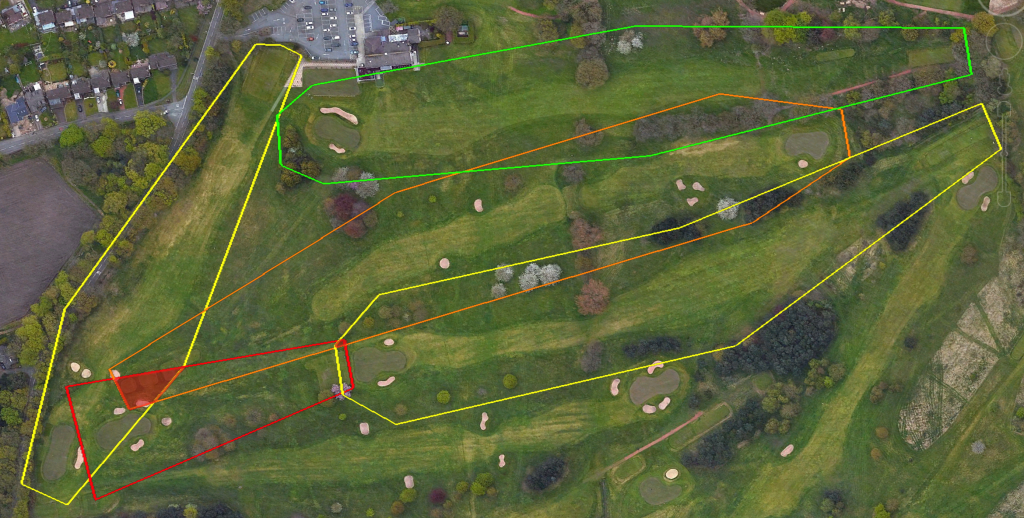
Located in a mature part of the Leverhulme Estate at the heart of the Wirral Peninsula, Bromborough Golf Club has been an established venue for over 100 years, but recently it’s really started to get noticed. It hosted the English Men’s Seniors Championship in 2003, the English Amateur Matchplay Championship in 2005, the Cheshire Strokeplay Championship in 2017 and the Cheshire Seniors Strokeplay Championship in 2018. It is also the home of the European Tour’s Paul Waring, winner of the Nordea Masters in 2018.
We spoke to the venue’s course manager, Darren Anderson MG, who himself has seen further and significant improvements in just the last two and a half years, to find out why the course is going from strength to strength.

Hi Darren. What is your path to greenkeeping, where did you study and how long have you now been at Bromborough GC?
I’m a third generation greenkeeper. And have spent as long as I can remember helping on my father’s and grandfather’s courses. At the age of 14 I started an afterschool job doing the strimming and divoting until I left school in 1992; starting a four-year apprenticeship at Abergele Golf Club.
After working my way up to deputy position I took over as head greenkeeper in 2002, in 2007 at the age of 31 I became the 46th Master Greenkeeper. I was then promoted to course manager.
I have spent a lifetime working to improve my greenkeeping knowledge in a fast moving industry improved by education. My education consists of:
Northop Horticultural College:
1995: NVQ level 2 sportsturf (greenkeeping)
1997: NVQ level 3 sportsturf (greenkeeping supervisory)
2000: NVQ level 4 sportsturf (greenkeeping management)
Reaseheath / Harper Adams University
2003: HNC Golf Course Management
Myerscough / University of Central Lancashire
2010: Foundation degree in sportsturf science
2014: BSc (Hons) Sportsturf Science and Management
2018: MA Sustainable Golf Course Management.
In 2018 after winning ‘environmental project of the year’ in the Golf Environment Awards, I decided after 26 years at Abergele Golf Club, the time was right to move on and I accepted the position as course manager at Bromborough Golf Club where I have been for two and a half years.
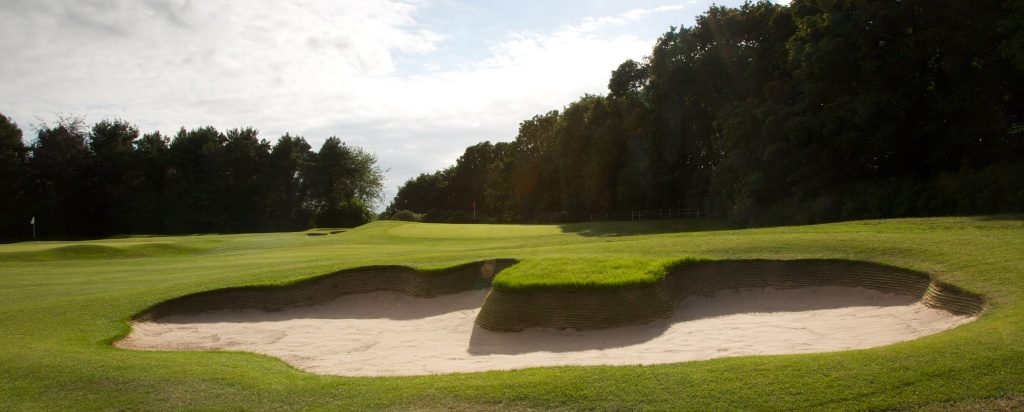
What is the current size of your team, does each person have specific tasks or do you all cross-fertilise to meet the daily needs of the workload?
There are eight greenkeepers within the greens team but we’re currently one down due to a member of staff relocating, the management committee want us to go to nine for next year. They are Darren Anderson (course manager), Gareth Tibbetts (deputy course manager), Kevin Eccles (senior greenkeeper), Mark Jackson ‘AKA Ernie’ (greenkeeper), Robert Myatt (greenkeeper), Dave Hazzlewood (greenkeeper) and Brian Dunning (seasonal greenkeeper).
As a young greenkeeper I had all the Flymo / strimming jobs and bunkers, while some of the greens staff had good jobs like mowing fairways, and they sure milked the jobs too. I always said ‘if I’m ever a head man everyone will share jobs’, and I have been true to my word, although Mark is our master of bunker maintenance and we daren’t challenge that! I personally think it’s better for staff morale if jobs are rotated fairly; this also increases their experience of all aspects of greenkeeping.
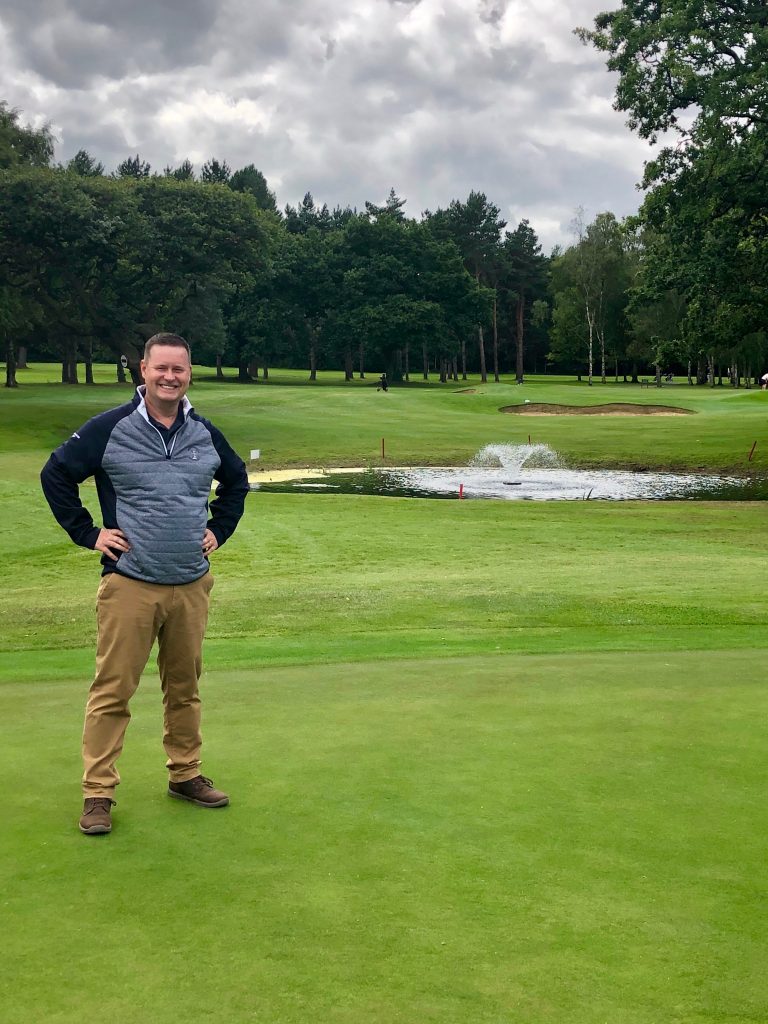
Congratulations to you and the team for winning the BIGGA ‘Project of the Year Award’ which was announced in Harrogate this year. What were the elements of the project and how have they impacted on the club by way of improvements and savings?
The project consisted of three parts:
- Irrigation ring main / field cables and controller replacement and installation
- Bunker redesign and reconstruction to EcoBunker
- Greens / approaches irrigation and bunker drip line installation.
In my first year in 2018 the irrigation failed several times and we couldn’t even irrigate greens by hand, this is not ideal when the greens sward is Poa annua dominant, this resulted in the greens burning and areas reaching permanent wilt point. That summer we also replaced 50 irrigation heads around the greens that were broken due to aeration damage from past practices as the existing staff said ‘we’ve been told you don’t need an irrigation system’ – how wrong they were!
We don’t know how old the original irrigation system is but we found a remnant of a plan of proposed changes dated 1973. After an uncomfortable meeting with the management and telling them the open truth about their irrigation system, I was asked to get an audit made, however an STRI audit surfaced that was carried out two years previously informed the club that the system desperately needed changing and was not fit for purpose.
The audit also informed the club that a new system would cost circa £250,000.
In the next management meeting I informed the club that I had overseen irrigation installations before and that I would design and install one gradually over the next five years with the ring main being replaced within three years. Between myself, Andy Yates from Greenacres and Phil Chadwick from Bailoy Irrigation system control, we worked out a design and costings.
We hired a large Case 860 mole plough to install the ring main and field wires. The club bought a Toro TX 26 trencher to trench out around greens.
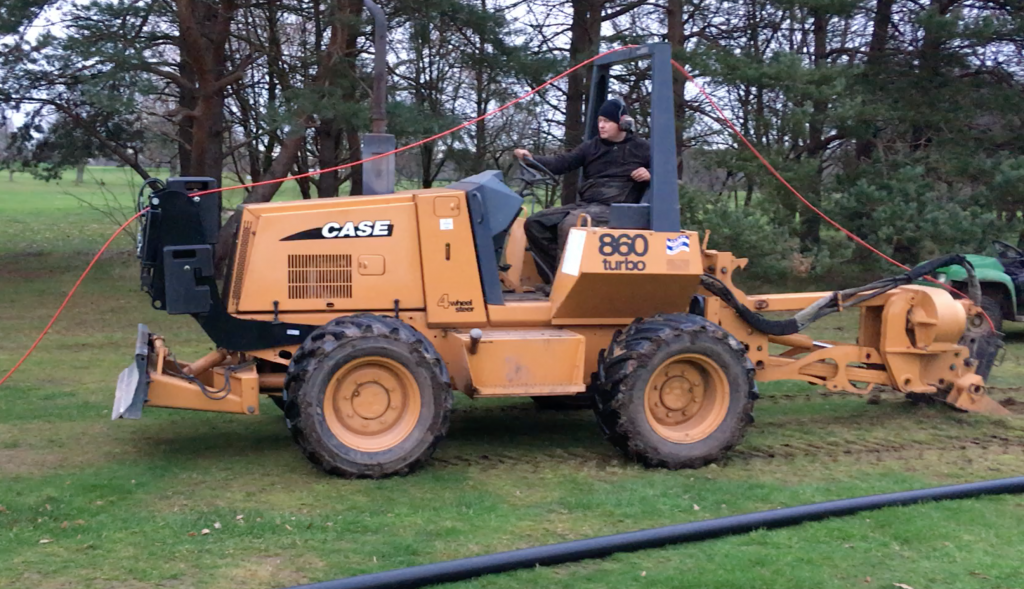
During the debates about the irrigation system we also highlighted that the bunkers needed to be replaced as they were tired and their faces were collapsing as the bunkers were heavily contaminated with clay and stones. In my recommendations I reminded them that I said in my interview that the bunkers needed replacing, and that I would replace them with EcoBunker as the faces will not degrade, and a liner would stop soil and stone migration.
A replacement programme was devised to replace the single block valve greens irrigation with valves in head alongside the replacement of bunkers on individual holes. During the bunker design, we also incorporated drip line irrigation installation to stop the faces burning out.
We estimate that installing the irrigation in-house will have saved the club £150,000 over the lifetime of the irrigation installation compared with contractors and dealers, otherwise we would still be patching the old one.
Bunkers have reduced maintenance and of course there’s no more eroding faces as the bunkers keep their design shape. Typically with EcoBunker and the liner we buy from them costs approximately £500 per average sized bunker.
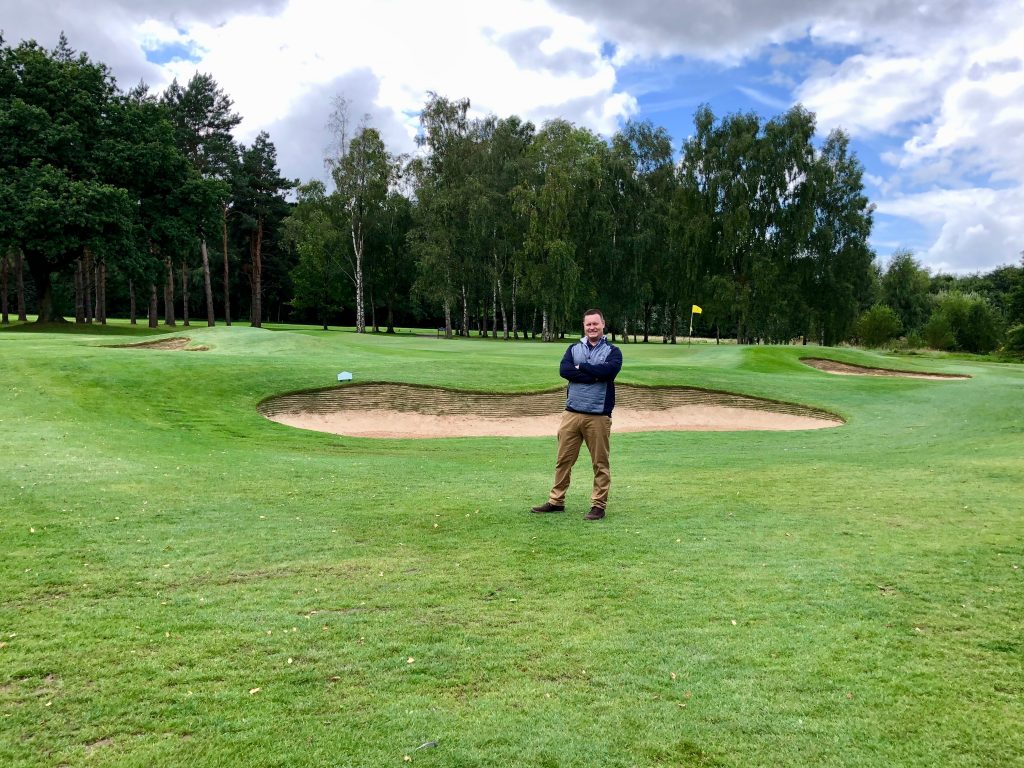
You yourself personally redesigned the bunkers. How did you go about this and what determined the direction you took the design in and the product used?
We were limited to keep the design close to the existing design, however bunkers that need rebuilding are always a completely different shape to how they were originally built due to erosion and edging as well as excessive build-up of sand splash.
The original plan was to just replace what was there but when we removed the sand splash we saw that the topography surrounding some bunkers could house really unique shaped bunkers that would enhance the course.
Plans / sketches were drawn up for some bunkers, while some were literally marked out a few times with spray paint until a design stood out. The main objective was to bowl the base of the bunkers so balls rolled into the middle for a fairer shot out, as the faces and banks around some bunkers are challenging enough.
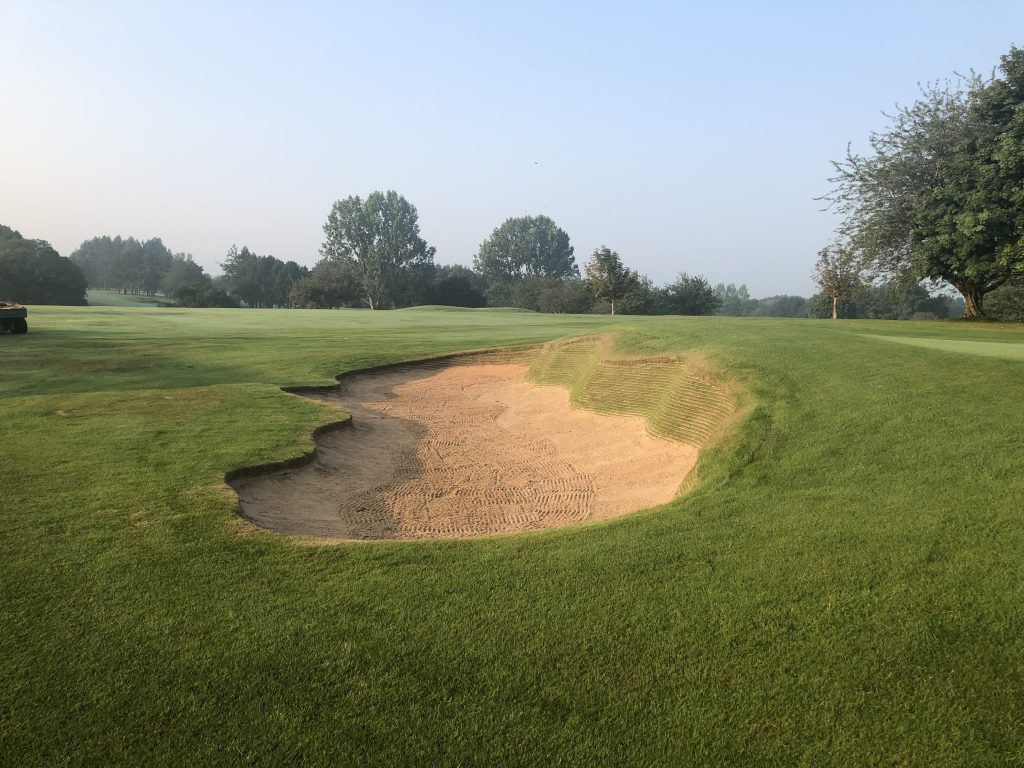
What were the benefits of working with the EcoBunker product, how has this contributed to the aesthetics of the course, what labour savings are you experiencing and how has the work you and the team done been received by the members?
EcoBunker is such a versatile product, you can build bunkers to any shape and size, you can do as little or as much as you want. Although EcoBunker is a type of revetting, it doesn’t mean you have to stick with revetted links style bunkers.
For a long time bunkers were round or kidney shaped and they only changed shape through wear.
Today we try to build bunkers that sit within their environment and enhance the hole, while still being a fair but challenging bunker.
The bunker liner used is first generation synthetic turf from EcoBunker, it is very much like a geotextile, this is tough but porous, so water can get to the drains without sand migration into the drains too.
All the bunkers we have rebuilt do not flood compared to the rest that have drainage.
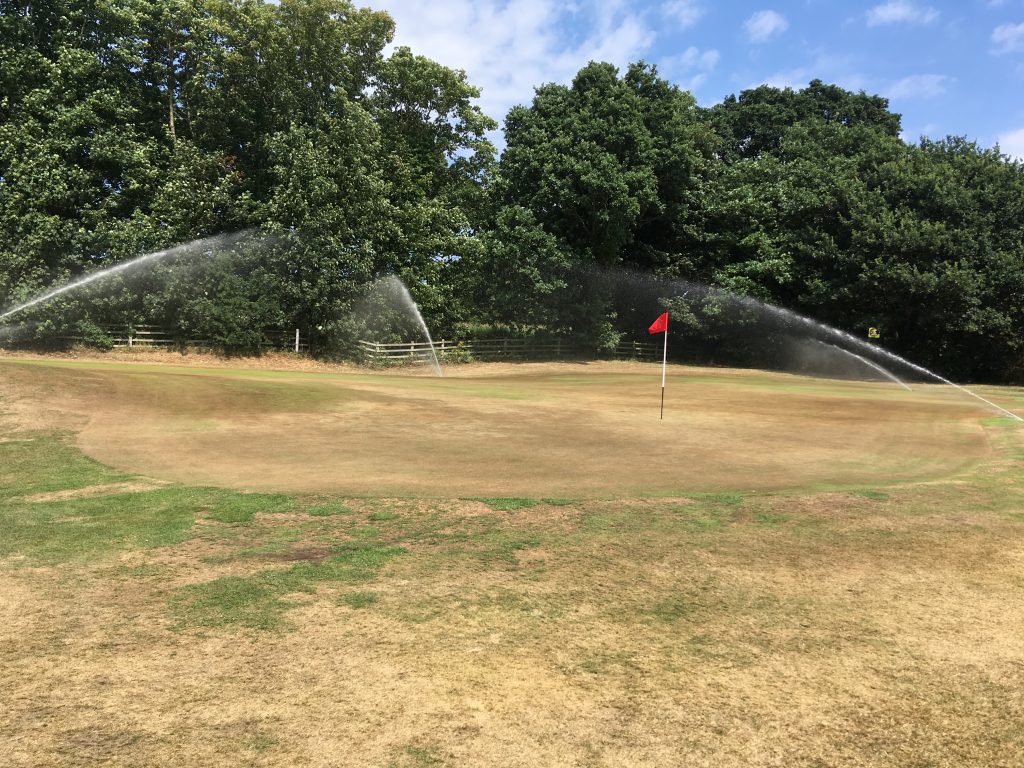
The course had a pretty old irrigation system which has now been replaced. What work was undertaken and which areas of the course have been addressed? Where are you drawing water from and what improvements have you seen?
We are two-thirds of the way through the 90mm ring main replacement, and have replaced the irrigation on eight greens but changing sprinkler formation for improved coverage. As part of the project we have installed irrigation to the approaches of four holes so far.
In 2019 Bromborough had a borehole installed for our irrigation needs, currently we are limited to 20,000 litres per day while our application for a full extraction licence goes through, we are installing a 300,000 litre tank to store borehole water for times of insufficient rainfall.
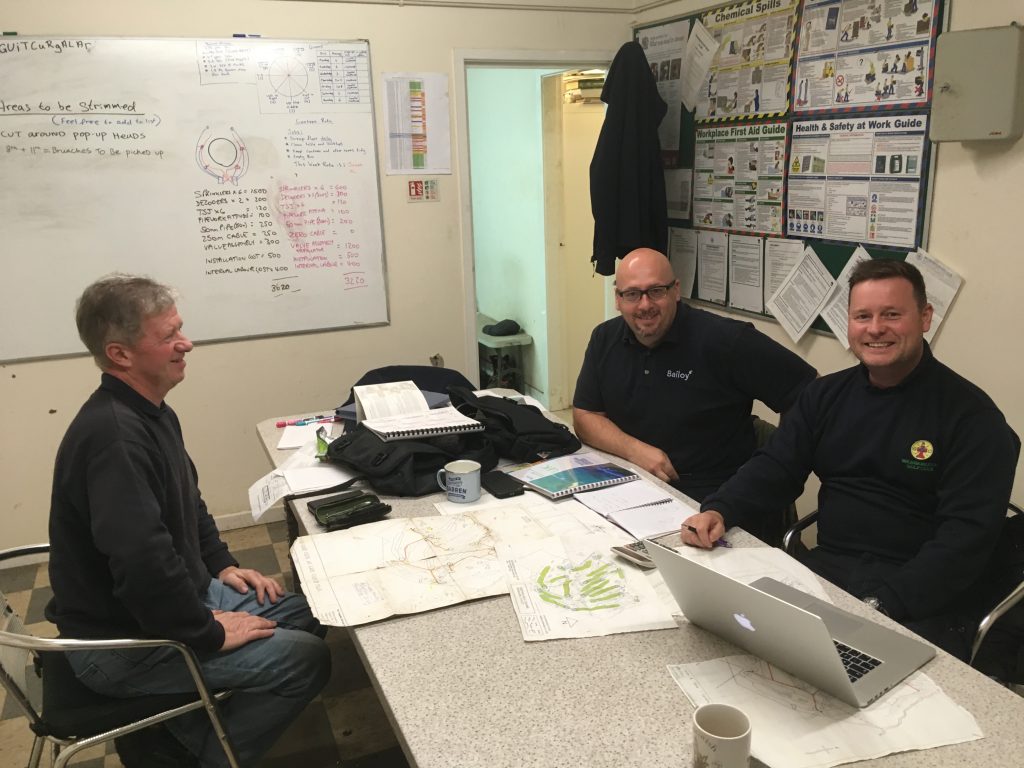
You’re an advocate of the POGO, what sparked your interest and how often do you use it?
I have always been interested in moisture meter work carried out ever since my early management days where our agronomist used to take readings. I also used moisture meters in measuring volumetric moisture content (VMC) in rootzones for my Masters thesis on surfactants use in golf greens management.
Last year we bought a POGO, however with us being so busy, I’m only just starting to use it properly. It’s a great bit of kit, the visuals that accompany the details give us a much better understanding of the readings.
Since we have had the POGO we have GPS’d the whole irrigation system from pipework to sprinkler locations. Sprinklers can also be adjusted to show the trajectory and sprinkler arc to show us the exact coverage.
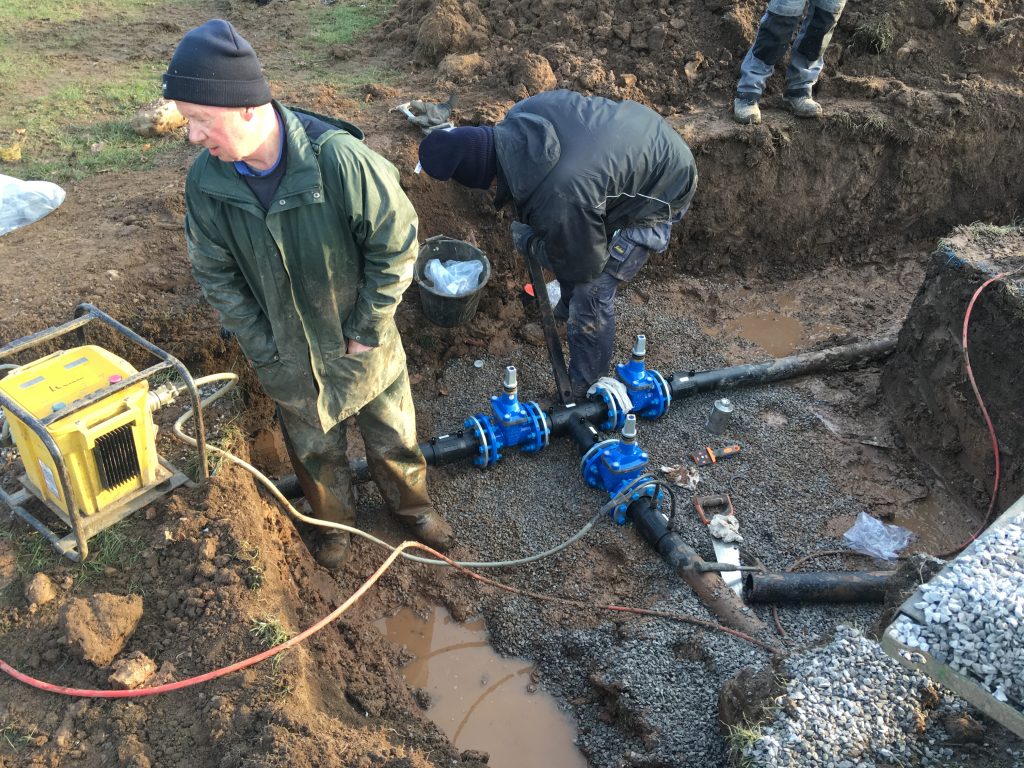
You’re running an overseeding programme, what current cultivars do you use across the course and what cultivars are you looking to repopulate the greens with?
We have been overseeding greens with browntop bent (Agrostis capillaris). The aim is to reduce Poa annua through better practices, once we have done this we will start to add Festuca sp in the programme as inputs reduce, this is part of a five-year programme, but it doesn’t stop there, the programme should be ongoing to manage the levels of bent and fescue.
Tees and divot mix for around the course is a mixture of Festuca rubra litoralis and Lolium perenne.
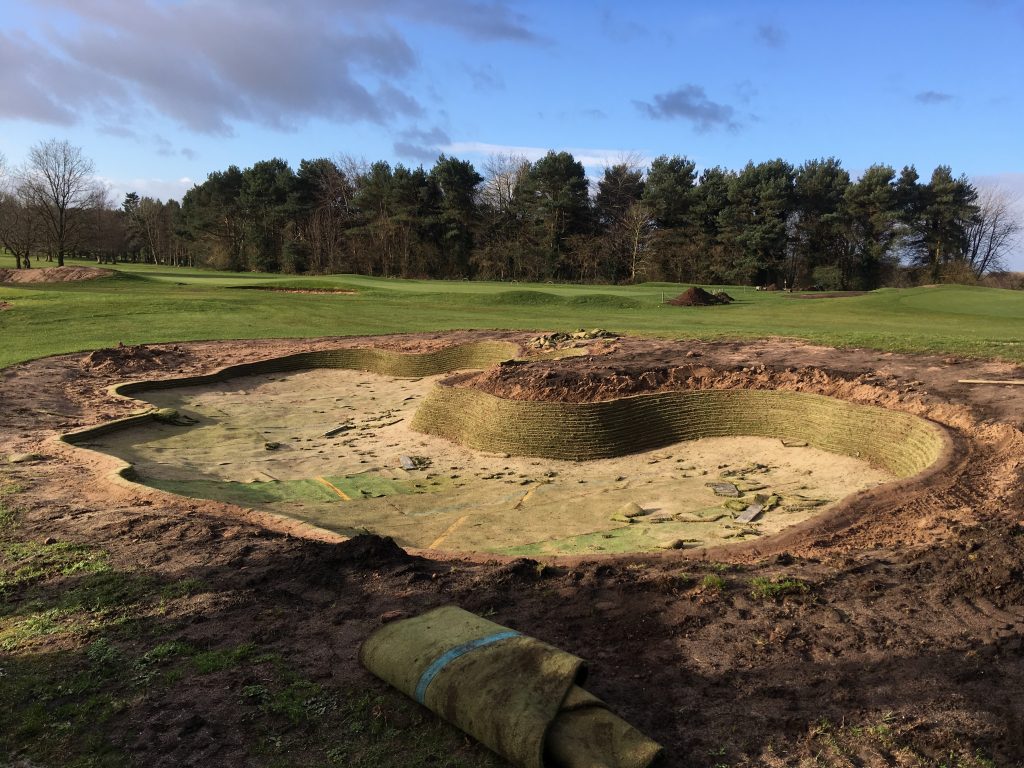
Two ponds have been installed since your arrival, how have these come about, how were they constructed and how well have they been received by the members?
Both ponds were once wetlands derived from old marl pits, however in the 80s they were surface drained to stop them from holding water, although they remained wet and boggy areas. The decision was made to make features out of them and turn them into ponds. We removed the drainage and imported clay to line the ponds with clay spoil from recent drainage projects.
The sixth hole has changed completely since the addition of a pond, golfers now have to play over a pond instead of a dip, a member was so impressed he bought a fountain; this really finishes the hole off.
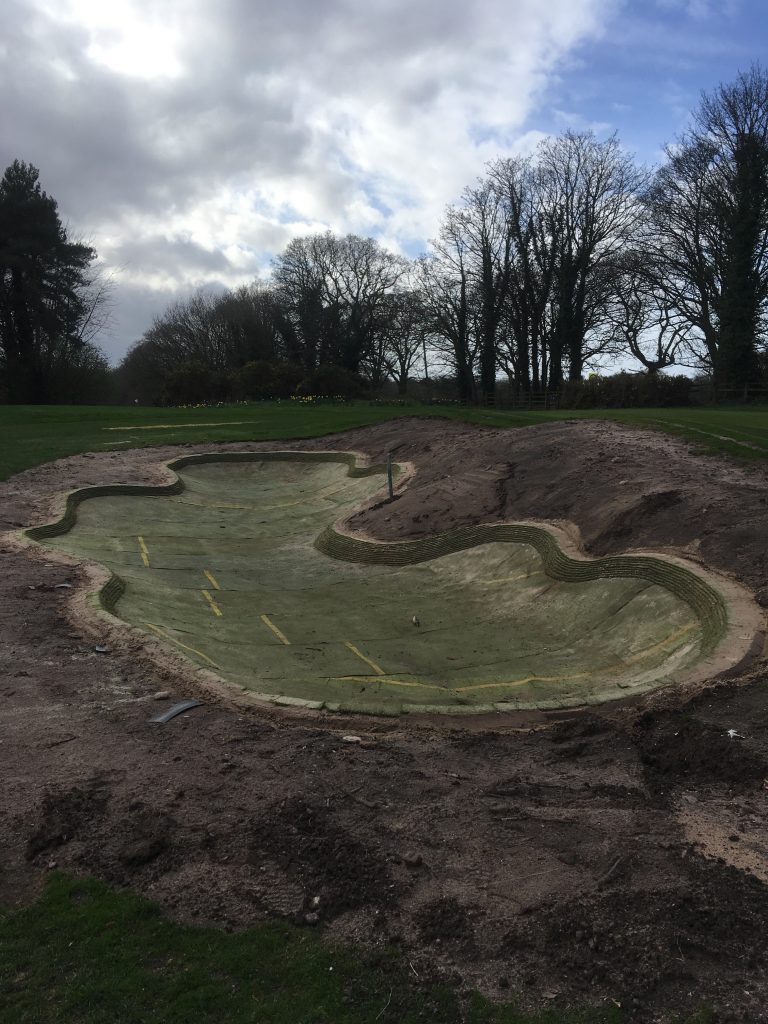
The 17th green and tee will be moving shortly, what are the reasons for this and who will be doing the work?
The 17th tee is currently in a dangerous position, it’s too close to the 16th green and in range from the first tee. Using Google Earth we marked out individual safety borders for the three holes in conflict; these are known as a ‘Safety Coffin’ due to its shape. The 17th tee has two overlaps from the 16th and first, proving to be a high danger zone. The tee could just be moved however it would change the holes from a par five to a par four and the club want to retain the par 72 status. Luckily there is space to move the green back to and it would actually improve the hole. Paul Waring, a professional golfer from Bromborough, who is ranked 85th in the world rankings, has helped with the design and giving us his professional influence to the changes, this resulted in the decision to fill and grade out a large dangerous dip in the middle of the hole so it isn’t so severe. From surveying the site and planning the elevations it is calculated that we need circa 2,000 tonnes to grade out the large dip. This has all been made possible from the club’s landlord, Leverhulme Trust, giving the club a reduction in rent to improve the course.
In April 2021 the new green and tees will be built with the green covered in cores from the other greens to provide consistency in sward composition, and will be left for nine months to mature. Prior to its opening, the existing green will be decommissioned and the materials taken to the practice ground to build a new green for a short game zone that will be known as the ‘Paul Waring short game zone’. The old tees will be graded out.
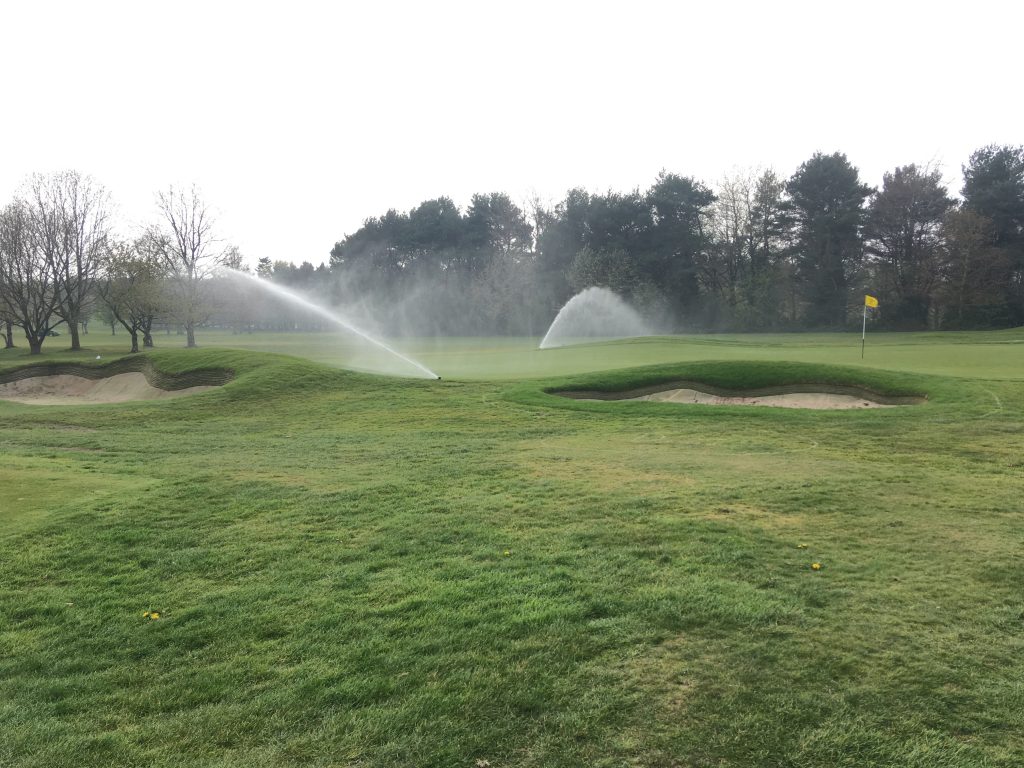
What height of cut will you use across the course?
Greens 4mm in summer and 5.5mm during winter; tees and surrounds 12mm in summer, 14mm in winter; fairways 13mm in summer, 14mm in winter; semi rough / teebanks 26mm; rough 38mm; and the long rough is cut once a year to 26mm.
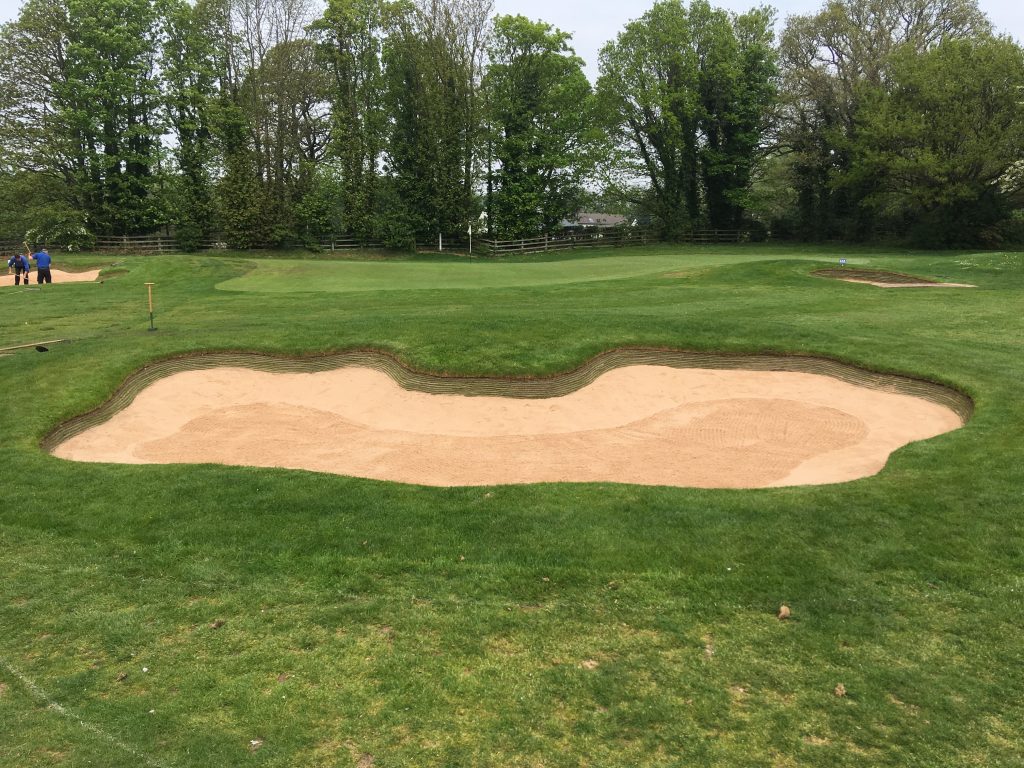
What do you think are the strengths that have carried you through your career and current position at Bromborough GC and how do you intend to keep the course evolving?
Determination to do things; and do them right, also the ability to accept I don’t know everything about agronomy and not to be scared to research any problems that I don’t know the answer to.
I intend to keep the course progression going forward by keeping up to date with technologies, staff training and vision.
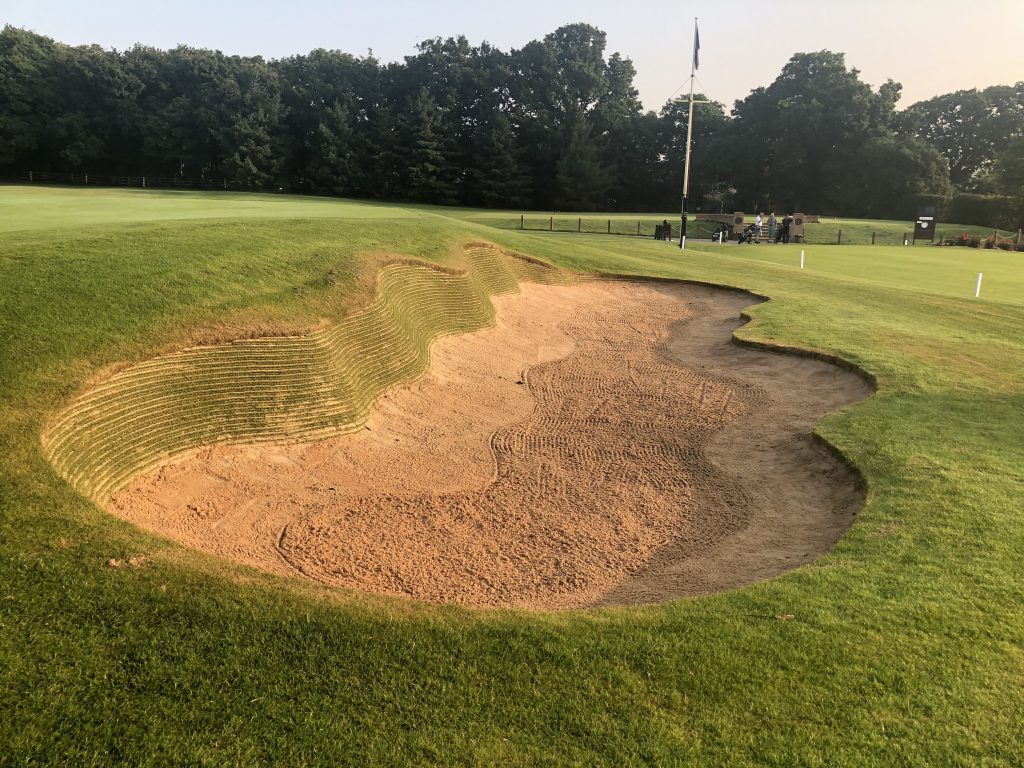
Drainage presents its challenges to many course managers. What drainage issues does the course suffer and which areas of the course in particular are presenting challenges to you at present and how do you look to remedy these?
Although Bromborough is a fantastic course, it is a very wet course in the winter, last year we replaced a 31 year old vertidrain for a brand new vertidrain, the aim is to get all shorter turf areas of the course vertidrained in early October to improve drainage potential. Slit tining will be carried out all over the course until mid December.
This summer we embarked on a drainage project draining the two worst holes on the course, drain laterals were 800mm deep by 100mm wide with five metre spacings totalling 4,800 metres of linear drainage. This was done in summer to minimise damage and to maximise drainage potential of the soil.
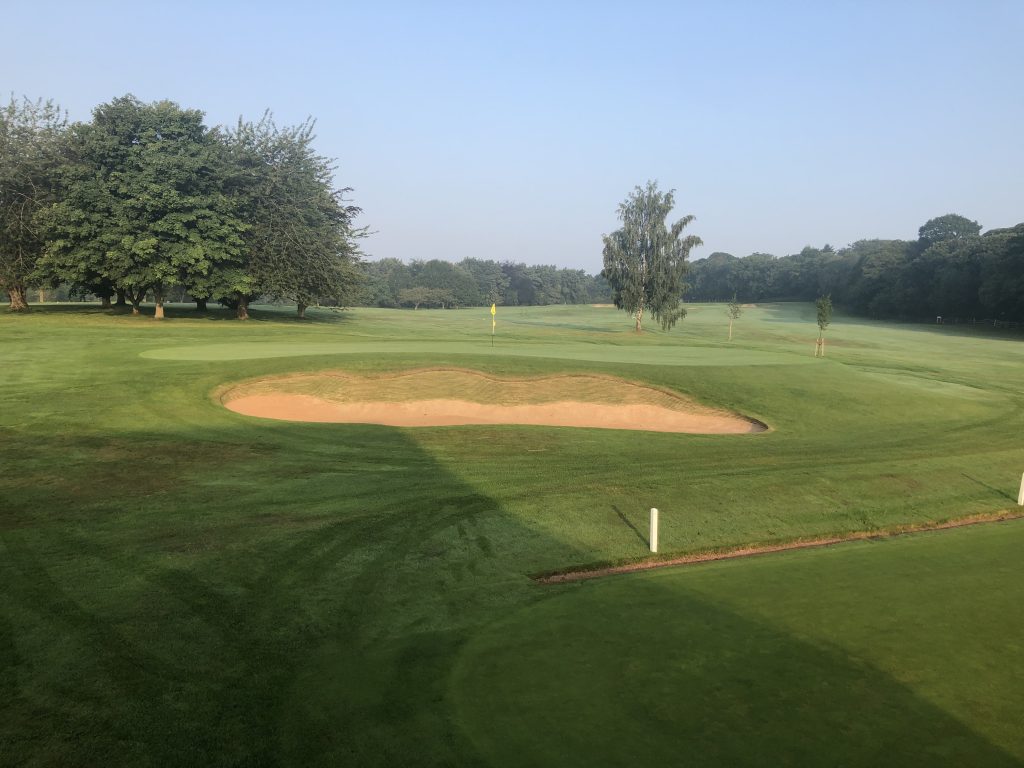
You and the team will be starting a tree management programme shortly. What are the challenges of this and what will you be doing and how do you imagine it will benefit playability and the health of the course?
Basically the trees on the course have not been managed, trees have been removed but with minimal pruning or thinning out.
All trees around the course need the canopies raised for the safety of golfers and greenkeepers, this will also tidy the course up and improve light and airflow to improve surface moisture, hopefully reducing disease pressure.
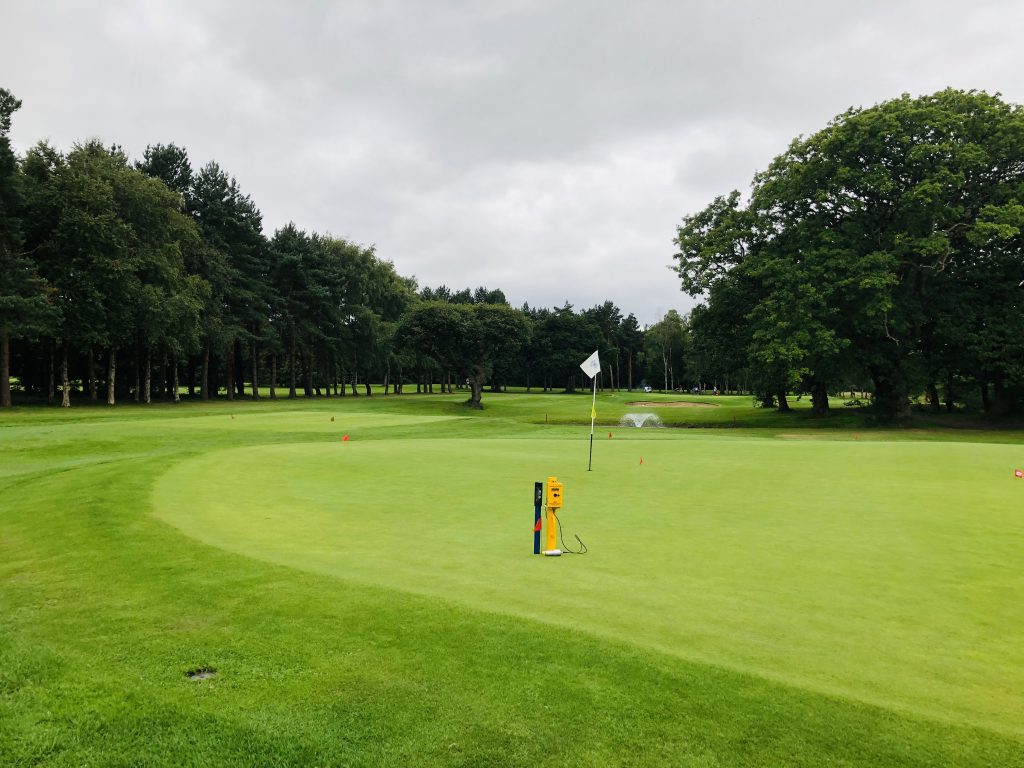
Please can you explain the value you place on investing in yourself and what it can enable you to achieve?
Everything we do in course management needs knowledge, whether it has been passed down from experienced greenkeepers or learnt through education. For example, identifying the species in the turf sward is important for knowing what agronomical practices are needed to manage that specific turf sward or a change in practices to change the sward composition, this all comes from knowledge and experience. I personally use my knowledge gained throughout the years ranging from my NVQ 2, to my most recent MA in sustainable golf course management.
As a young greenkeeper I didn’t like my NVQ level 2, I never understood why we had to identify grasses, weeds and diseases. However, those basics were the building blocks of my successful career. College taught me how to design irrigation systems, whilst being lucky enough to oversee a full irrigation installation, this experience taught me the practical side alongside the theoretical taught in college.
On my arrival at Bromborough I put my knowledge into practice by designing and installing a computerised valve in head irrigation system in-house. We also replaced the old machinery, I had to create a feasibility study into machinery replacement for a range of machinery manufacturers covering new and ex demo, and selectively sourcing quality second hand, in the end we made a selection from all three depending what the machines’ estimated workload was, this was also brought about from practical and theoretical experiences.
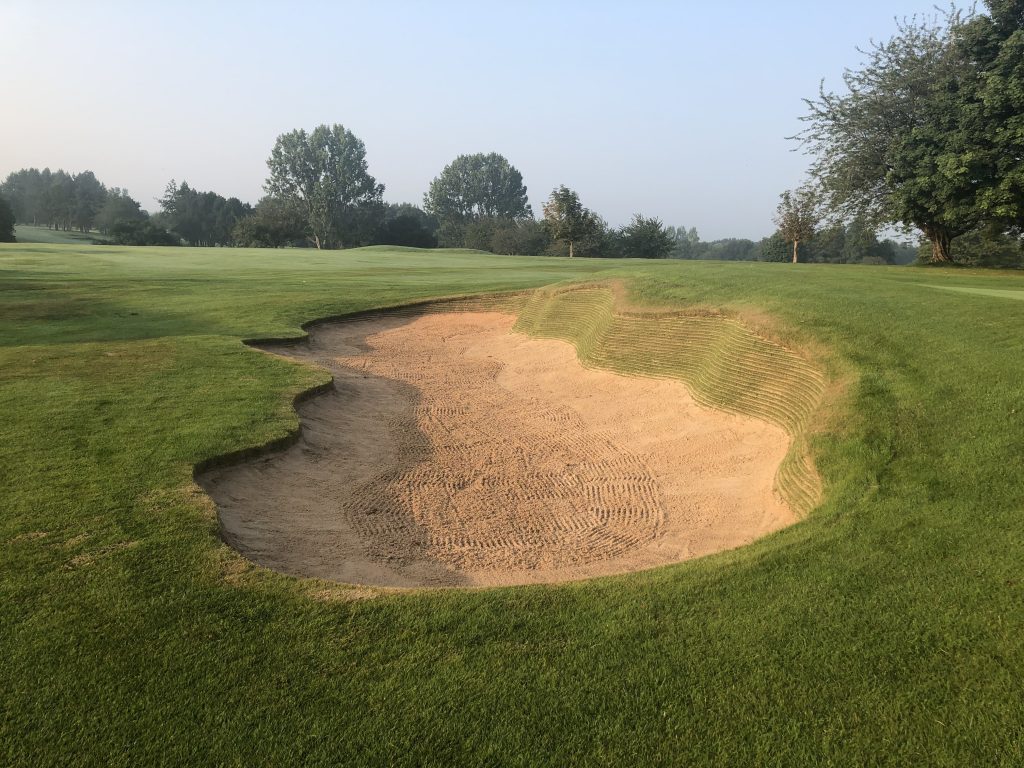
Golf course design and construction was also a great subject to learn and again I had the opportunity at Abergele GC in overseeing the redesign and construction of flat clay push-up greens to shapely USGA specification greens. Both practical and theoretical experiences have given me the knowledge to undertake the bunker redesign and construction and so on, in turning Bromborough around in such a short timeframe.
Education comes at a cost and I have been lucky enough to gain grants or scholarships; The R&A scholarships were great, not only did The R&A contribute to fees but it offered so much more, from access to working in an array of events and a trip to St Andrews, with the greatest experience going to visit Askernish Golf Course situated in South Uist in the Outer Hebrides to see the sustainable management of the links course. All the experiences The R&A offer also led us to networking and making good friends in the industry.
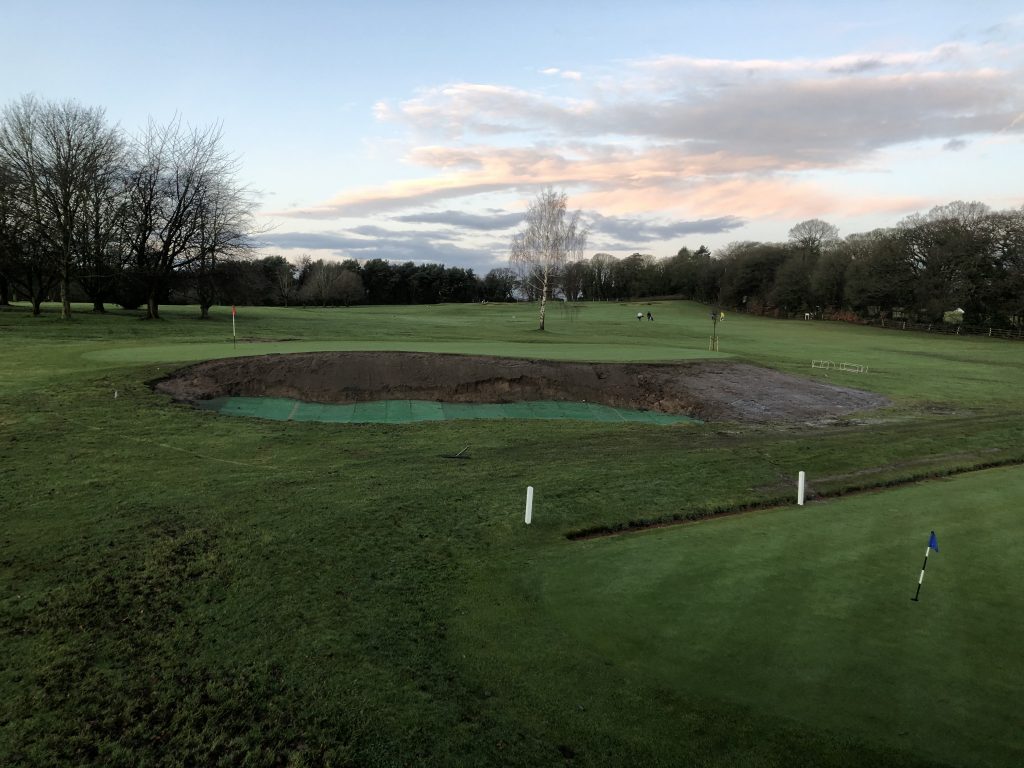
The pressures on the course manager to deliver a better product are growing year on year and the level of professionalism is rising with this. What do you think are the qualities now needed to meet the requirements and demands of golfers by someone in your position?
When we talk about qualities I personally believe that positivity and self-belief and being a strong person are the basis of a successful manager today. As well as education, keeping up to date with technologies and trends by the way of BTME education and road shows, with webinars becoming popular in recent times. By keeping ourselves current with trends and new technologies we improve our golf courses and golfers’ experiences too, media and social media platforms highlight our courses, even articles such as this showpieces what we do, and hopefully inspire others to carry out similar projects.
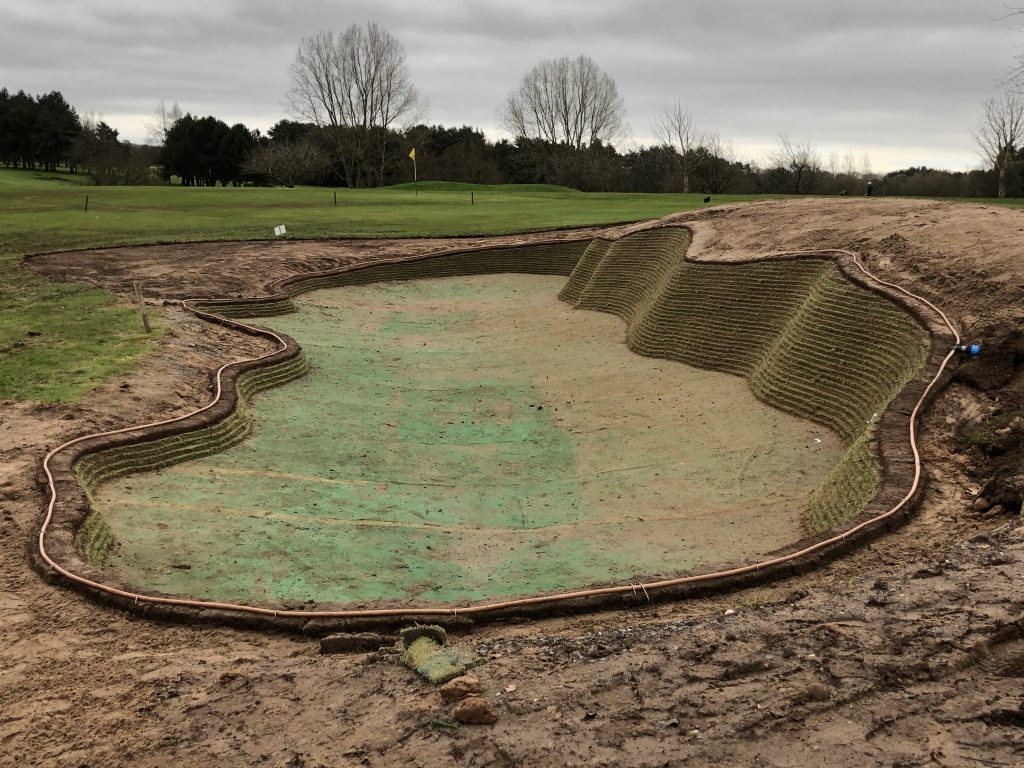
What currently gives you the greatest satisfaction from your job?
Looking at the course and thinking how far we have come in two years with such high standards makes me very proud of our achievements as a team, I like to look up the first and see how the new bunkers complement the landscape. Feedback from golfers saying the course is the best they have ever seen it, with one member being a member for over 50 years.
I don’t class any single project as our biggest achievement, but everything we have done so far at Bromborough, enhancing the course with the new style EcoBunkers and irrigation replacement. One thing that has to be said is; yes, the greens team has done a tremendous job, but it’s only with the backing of the club management, the club management came into office around the same time that I arrived at Bromborough and they have turned the club around.
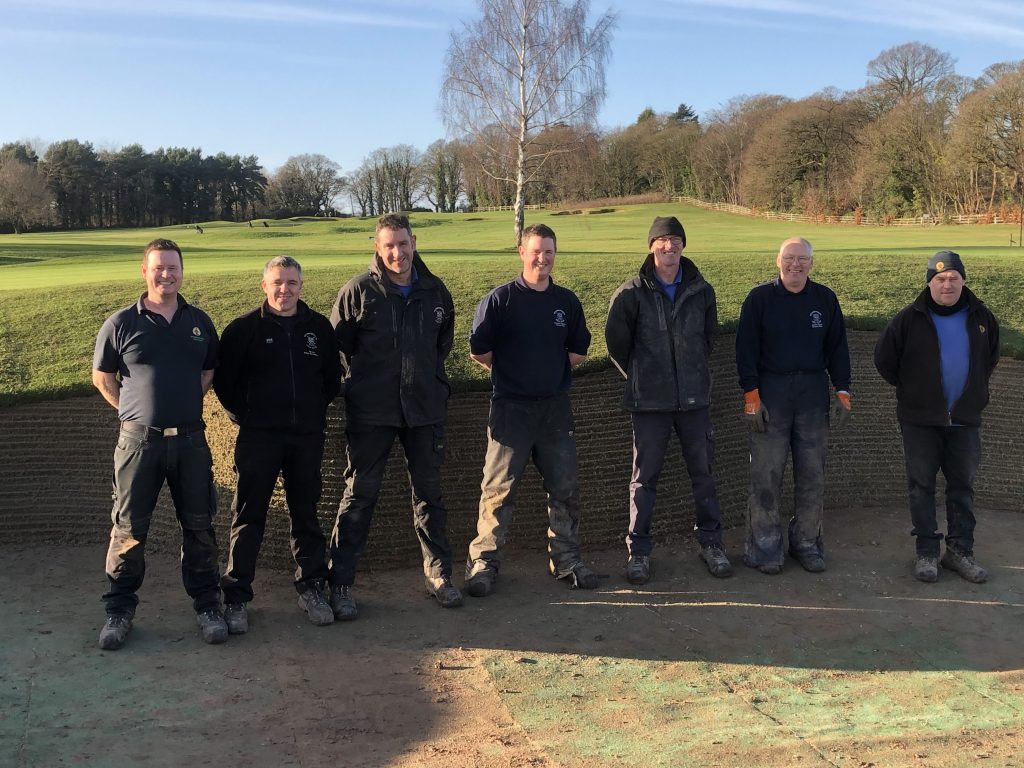
What are the most memorable things you have been taught in your career and what advice would you give to youngsters wanting to pursue a career in the profession?
The most memorable thing I remember is as an apprentice, my father showing me how to mow greens but it echoed throughout my training. Dad taught me to do my best all the time, no matter what the job is, always do a job right even if it can be done more easily but with reduced standards. An example is taking the time to take the flag out before mowing a green, instead of taking the easy option of grabbing the flag while passing it, and also trying to put it back in, either slowing the machine down to do this, or having stripes like bananas!
My advice for anyone wanting to take the path into our profession would be: greenkeeping is a great profession and one of the most satisfying, it’s challenging and can be very stressful as you progress through the ranks, but so is any job. Greenkeeping can also lead to other professions into sports turf or even into consultancy, greenkeeping can also take you world wide, especially if under the wing of The R&A scholarship, something I wished I had done when I was younger.
One last thing I would tell any young greenkeeper, always ask questions, too many people carry out tasks and don’t know why they are doing them apart from they have been told to do it.
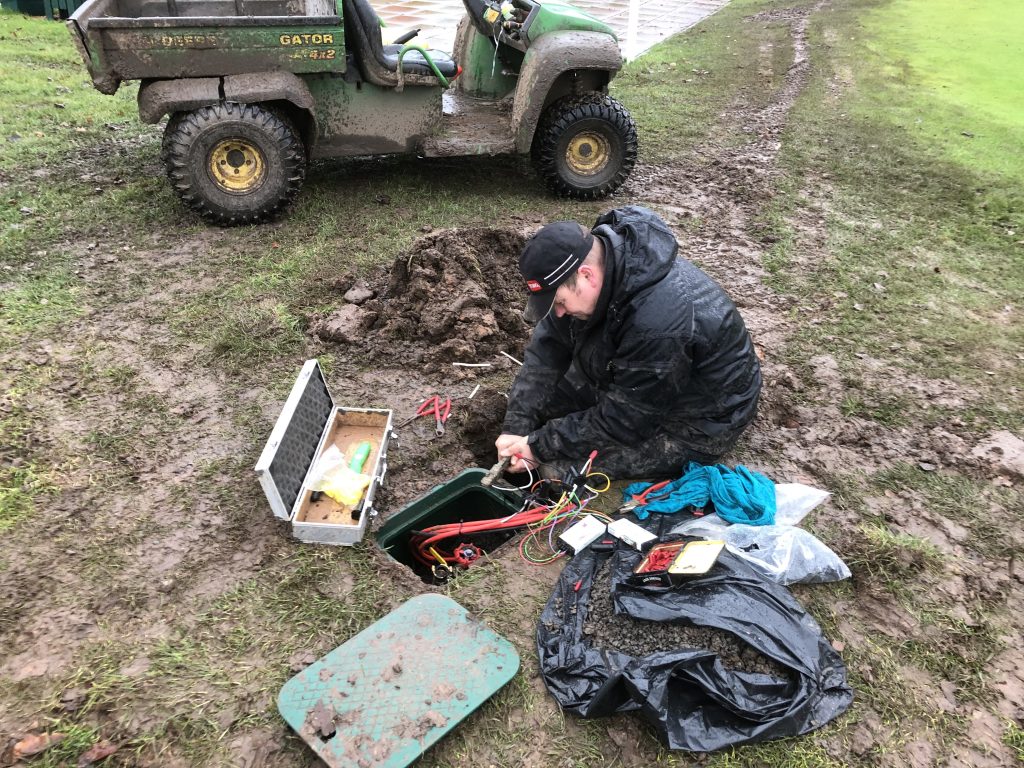
What changes do you think need to be made to benefit the industry sector and profession of the greenkeeper?
To be honest, there has been a lot done over the years to highlight we aren’t just grass cutters but professionals, however in an evolving profession there’s always more to do. A lot of the responsibility for change also comes down to us as greenkeepers to come across as professionals, being an active member of BIGGA is a positive step with the resources available. We need to improve the education for apprentices or greenkeepers doing level 2 and 3 greenkeeping.
During my level 2, we had to be properly assessed to prove we could do tasks, not just photos in a folder. We had to identify grasses, diseases / disorders, shrubs, trees and learn the common and botanical names, where over the past 15 years if a student has a picture in their folder as evidence, they’re deemed competent, however I do acknowledge that not all colleges are like this.
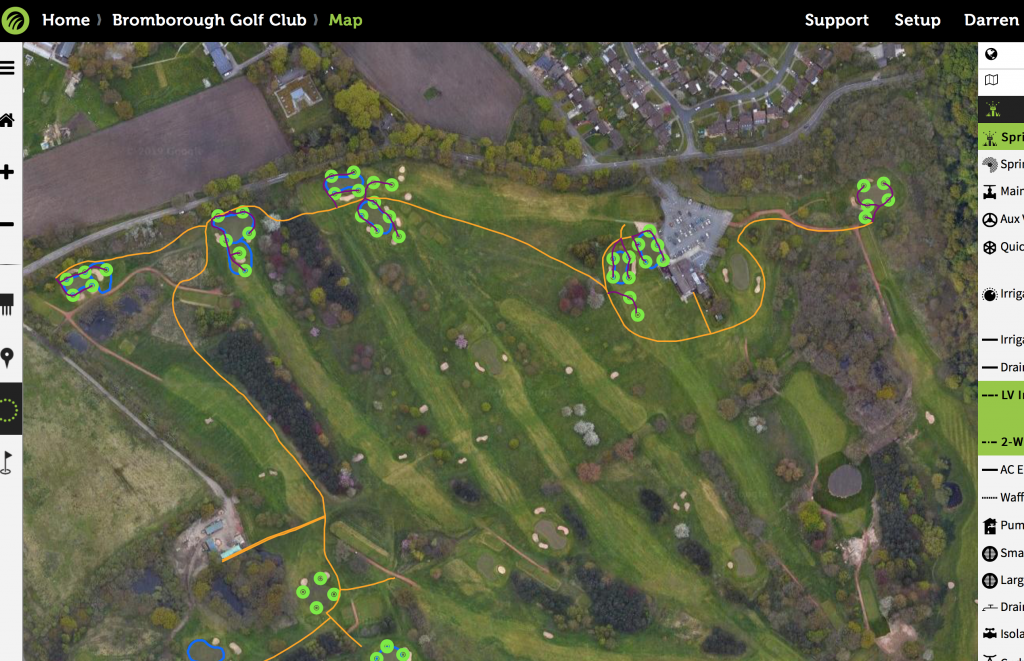
If we don’t return to some basics then the expertise will dwindle for future greenkeepers and our golf courses. We’ve come so far in other ways of education, especially BTME, but let’s make sure we pass on the knowledge.

























